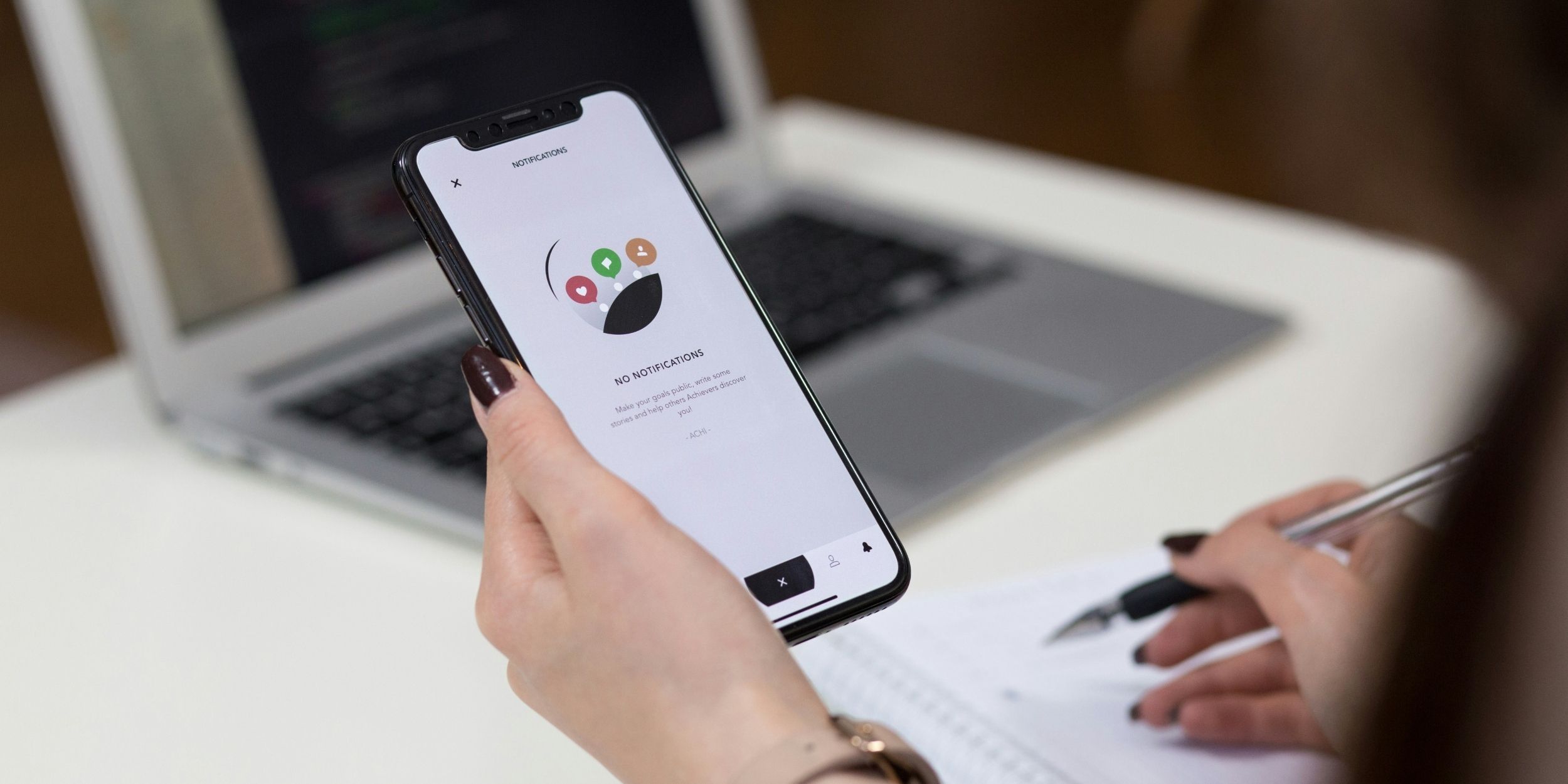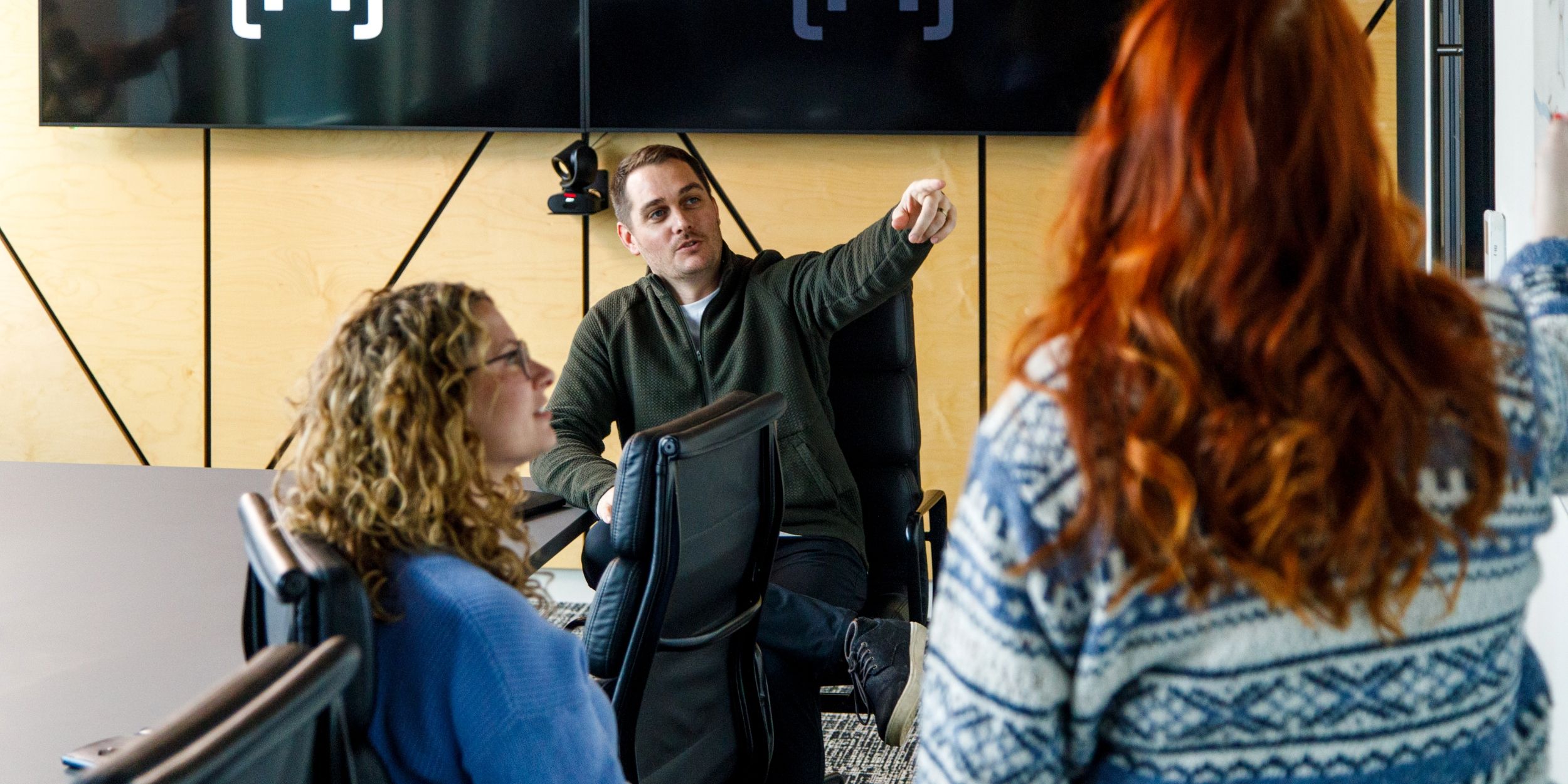MichiganLabs’ approach to product design: A strategic, problem-solving process
Author
Nicole Zwiers
Date Published

Business leaders pursuing custom software development need to deliver value quickly, while also ensuring meaningful, long-lasting results.
Unfortunately, this dilemma means that companies too often prioritize rapid development at the sacrifice of user research. When this happens, there’s a chance that you build a product that users can’t use or don’t want to use—damaging your brand reputation along the way.
That’s why we stress the importance of slowing down—just a little—to ensure your users have the best possible experience with your custom software.
Through this article, we’ll explain why product design—also known as UX design—is more than just creating visually-appealing screens. It’s a strategic problem-solving process that leads to a valuable digital product.
Michigan Software Labs’ people-first approach
This is one of a four-part series about Michigan Software Labs’ people-first approach to custom software development.
When you choose us as your digital product partners, you’ll partner with a close-knit project team consisting of:
- A delivery lead
- A UX designer
- Developer(s)
- A principal consultant
Our flat company structure (and localized office) means these groups work directly with the client product owner to create custom software. So, we believe it’s worth the time to thoughtfully share what you can expect from an engagement with us!
What do UX designers do?
At their core, product designers—also known as UX designers—solve problems for digital interfaces. Our designers work alongside principals and delivery leads to create a product out of a problem.
This results in the creation of a design system and low-fidelity and high-fidelity screens that developers then build.
Sound familiar? These are the outputs most people are familiar with and expect from work with a custom software development company.
However, it’s more accurate to say that UX designers are both creatives and strategists—united by user-centric thinking. That’s because product design is more than making pretty screens. It’s a holistic approach that involves brainstorming, user research, and more.
In fact, our industry outlines five parts of the design thinking process:
- Empathize: Start by observing and engaging with real users or people who represent the target group to understand their challenges and frustrations.
- Define: Clearly state the problem the client is trying to solve, framed from the user’s perspective.
- Ideate: Generate possible solutions by challenging assumptions and studying different perspectives.
- Prototype: Start to create solutions by designing low-fidelity and/or high-fidelity prototypes that can be tested on real users (alongside developers, of course).
- Test: Try out the solutions by observing users as they interact with the prototype—highlighting any flaws to address and correct.
These phases of the design thinking process aren’t linear, though. Product designers frequently conduct multiple stages concurrently and use new insights to revisit the ideation stage—whatever is necessary to best serve our clients.
Why do UX designers ask so many questions?
It’s tempting to jump right to sketching beautiful, high-fidelity software screens, right?
However, when a designer is working on a client project, they generally spend about 90% of their time solving the user’s problem and 10% of their time literally creating the solution.
Why can’t they skip right to building the screens? Great question.
You’ve likely identified the right digital solution for your business needs—through product strategy work upfront. Perhaps you’ve narrowed your many options down to an iOS mobile app.
But there are still questions about how to create that best product, such as:
- Will it be a native app or a cross-platform solution?
- Incorporate a minimalist design or opt for a more vibrant and interactive user interface?
- Prioritize speed and efficiency or focus on feature-rich functionality?
Remember, a designer's role is to focus on user satisfaction and ensure that the product truly fulfills the user’s needs.
So product designers lean into the triple diamond approach—opening up the problem and asking tons of questions. They dive into user preferences, explore potential pain points, and study the design choices of other similar products. It’s only then that they create solutions for that problem.
Designers hate a vacuum. Our product designers operate best with data and information throughout the product roadmap—from ideation to testing. When clients provide us with relevant information and access to user testing, we’re able to deliver solutions that truly meet your users’ needs.

How does a UX designer contribute to digital product success?
The simplest answer is: UX designers ensure user satisfaction.
Your company’s value comes from how much time users spend with your brand and products or services, right?
So, every interaction with your digital product—whether mobile, web, or otherwise—is a transaction. If those touchpoints are filled with friction (confusing navigation, slow loading times, or inconsistent design elements), they’ll gradually become frustrated with your brand too!
The user may not consciously be able to explain why they’re frustrated, but they’ll start looking for other solutions. And, if your digital product is internal-facing, your staff will lose productivity.
True digital partnerships extend beyond the code, as designers play a pivotal role in shaping successful software products. A robust UX design process creates a seamless and valuable interaction between your company and the product’s users—whether that’s consumers or your own staff.
—
Curious what it would look like to work with the rest of a MichiganLabs project team? Explore the other articles in this series:
Ready to discuss your custom software idea? Let’s schedule a discovery conversation!

Discover why user research is crucial in software development. Learn effective methods to understand & meet user needs for successful digital products

Achieve success in your custom software by starting with product strategy. Discover the key questions to ask to align your digital product with business goals and user needs.